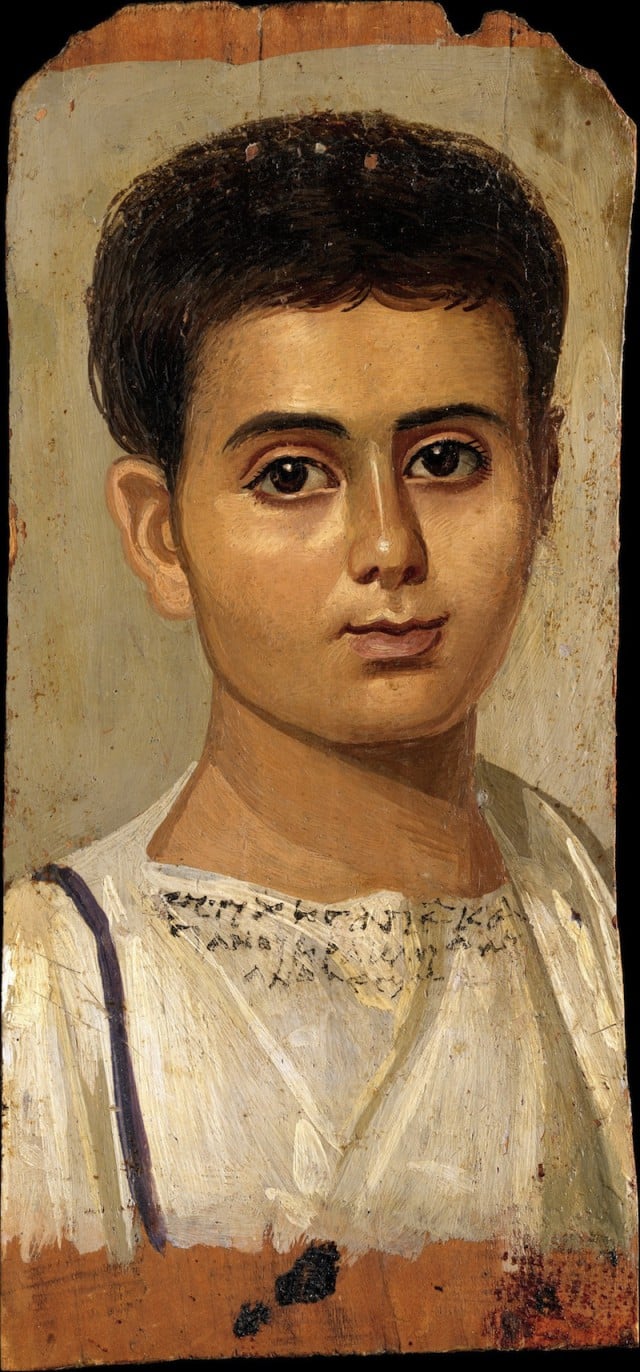Art & Exhibitions
At the Met, A Faiyum Portrait Preserves Greatness
A Faiyum portrait from Egypt hints at the greatness of classical painting.

A Faiyum portrait from Egypt hints at the greatness of classical painting.

Blake Gopnik


Last week, the Daily Pic visited the roof of the Metropolitan Museum of Art in New York to take in the Dan Graham installation. In case any of its readers decide to follow, I thought I’d point to something else I saw on my visit: A so-called “Faiyum” portrait of a teenaged former slave named Eutyches, made somewhere around AD 125 in Greek-speaking, Roman-ruled Egypt. I’m not showing it today because of what a major, singular work it is; I’m Daily Pic-ing it because it’s actually a quite minor funerary object, one of tens of thousands like it made in its day–and yet is still full of excellences. It has an almost full roster of high-realist tricks, such as weren’t rediscovered until 1300 years later by Italian and Netherlandish portraitists.
Check out the lovely, vivifying reflections of a light source in Eutyches’s eyes; the glowing amber of his irises; the gleams of light on his nose and eyelids and, especially, on his right eye socket, giving a sense of the slight sheen of his skin and the contours of his face; the soft “fill” light bouncing up from his robe onto the shaded left side of his jaw; the crisp shadows cast by his hair and nose and chin–even by his eyelashes and upper eyelids onto the white of his eyes. All this virtuosity hasn’t come down to us because this portrait was especially valued or notable; these marks of skill just happened to survive because the piece was painted in long-lasting wax then preserved by the dry air of Egypt. If this accidental survivor from the tail end of provincial Greek culture could be painted this well, I can barely imagine how great the lost masterpieces of ancient realism must have been, such as we know were painted fully 500 years earlier in Athens.
For a full survey of past Daily Pics visit blakegopnik.com/archive.